Buttercup Brave
April 11, 2024
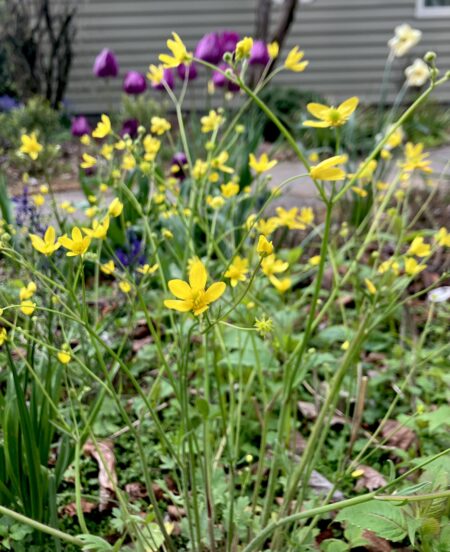
Once upon a time, in earliest spring, when golden moments of sunshine played at rainbow making between intervals of storm showers, a young snail extended their tentacles out to the waking world.
Snail, hugging cold ground with mucus-slippered foot, felt little beyond the plodding cycle of clouded day becoming night and onto gray day again. It was a comforting sort of nothingness—a melancholy that suited Snail just fine.
Until that April day, when one warm beam of sunlight alit atop their sensitive-eyed tentacles. The shock of brightness and warmth snapped Snail to react, retracting all their curiosity-stretched bits, followed by a full-body retreat into their shell.
“Caw, caw, caw,” laughed Crow, black wings glinting and wide. “The sunlight’s a monster. The sunlight’s a beast. Better run little snail! If only you could! Caw, caw, caw!”
As Snail cowered, a small spring bee buzzed Crow into wing-folded silence. “Hush, you bully,” hummed the fairy-winged bee. “The sun is golden! The sun is life!”
Head bowed, Crow watched as Bee swirled among petals of sunlit yellow waving atop wiry, green stems.
“The sun opens Buttercups and makes all things grow,” buzzed Bee. She encouraged Snail to explore the world again, “There’s nothing to fear here!”
And so, Snail emerged again from their shell and felt along the wet ground, inching out into the light. The dapple of sun filtering through butter-colored bowls of blooms played across Snail’s dancing tentacles.
A new feeling warmed inside Snail’s cool heart. Plodding melancholy slowly gave way to the quiet thrill of Joy.
“What’s that you’re doing inside those golden bowls?” Snail asked Bee.
“There’s a rich feast in here for me,” she replied.
And Snail saw how her legs and belly were dusty with golden grains, and how her proboscis gleamed with nectar.
“Ahh, ahh,” hummed Snail.
“Ahh, ahh,” hummed Bee.
And Crow sat humbled in the light.
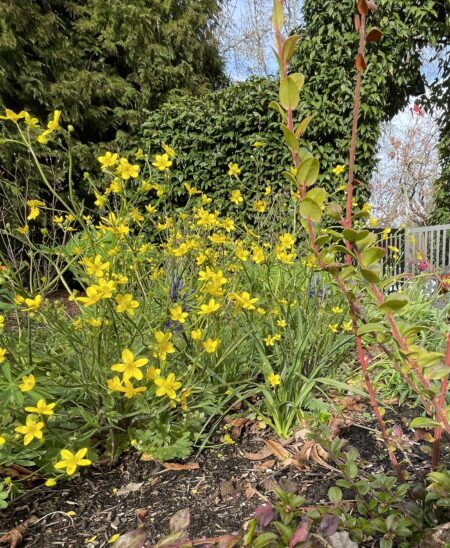
Western Buttercup – Ranunculus occidentalis
As one of the first native flowers to bloom in spring, Western Buttercup is indeed a boon to pollinators seeking sustenance upon emerging from their winter nests. And, just as its bright bowls bring joy to small creatures, they can also light hope in your world weary heart.
“I think all aesthetic judgements, all aesthetic choices we are making—are moral choices,” says Chinese conceptual artist Ai Weiwei.
The choices you make about what to plant in your landscape garden tend to be primarily about what looks good to you. And, I get that. We all crave beauty and the chance to express our personal preferences. You push your cart down the aisles of the local nursery, eyes ensnared by the biggest, showy bloomers. Irresistible, they jump onto your cart almost of their own will. “Pick me! I’m fabulous!”
Thinking about what you value makes you pause before checking out. You’ve heard how native pollinators need native plants for their sustenance. And this matters to you. You want to do something to help those little guys. Helping brings you an even deeper joy.
Back in the corner, you spy the sign “Native Plants” and steer that way. The plants in this section of the nursery, well, they look a little wild—not so immediately showy. But, you know that many native plants grow better in the ground than in little pots. And, even more, you can see their future alive with fairy-winged bees. This is beauty, too.
Behind my love of Western Buttercup and other native wildflowers is a deep impulse to make choices that contribute hopefully to the preservation of Nature with all her complexity and interconnected relationships intact and thriving.
Golden bowls of native buttercups are lovely in their own right, and even more so when enlivened by a diversity of pollinators and a companionable cohort of other plants.
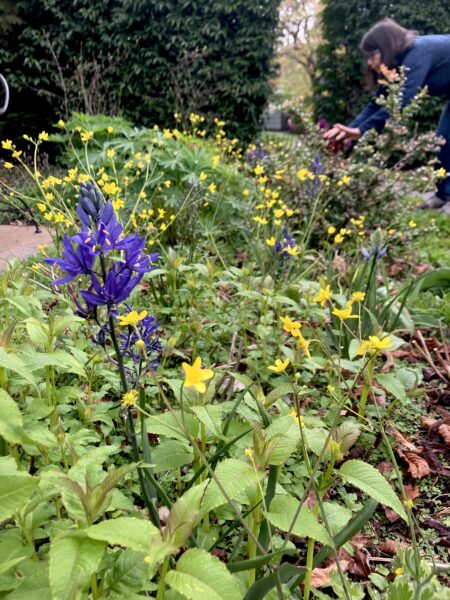
Imitate the wisdom of Nature by adding this wildflower to your garden alongside camas (Camassia quamash) for the complimentary color display of blue and yellow. Early blue violet (Viola adunca) could bring the blue down to ground level, attracting butterflies and offering browseable salad greens.
Or, plant Western Buttercup with traditional garden bulbs like daffodils and tulips. Its dancing stems of savory yellow are the perfect pairing with those bigger classics of the season—like a pat of butter on a brown bun.
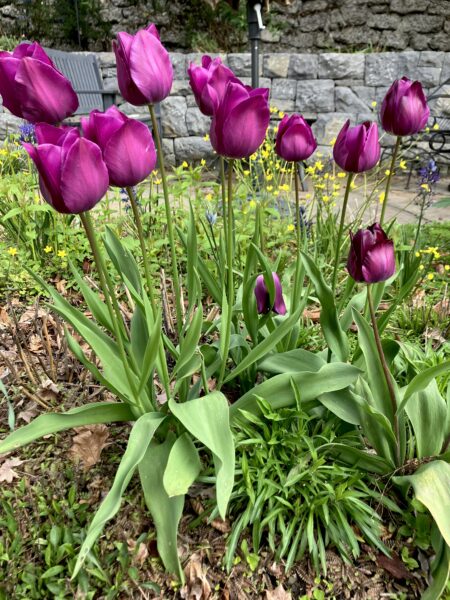
This native flower presents the perfect opportunity to learn a new word from ecology that can help you embrace the Pacific Northwest experience of winter-wet / summer-dry ground. Ranunculus occidentalis is a “facultative wetland” species. Facultative means to have the ability to live under more than one specific set of conditions. So, wet, yes, and also dry.
Whether you garden where the winter water table is high and the soil is clay (likely bemoaning the mud of winter), or where the ground is merely moist from our region’s blessedly regular seasonal rainfall, facultative wetland species are smart choices. They’ll thrive without extra labor and resource intensive modifications of your soil. No raised beds required.
Western Buttercup will brighten that spring damp ground starting as early as March and continuing through July or even August. Summer’s heat and dryness won’t stop the show. Facultative could be another way of saying both/and. Both wet and dry. Both natives and garden classics. An open mind, an adaptable garden, full of life.
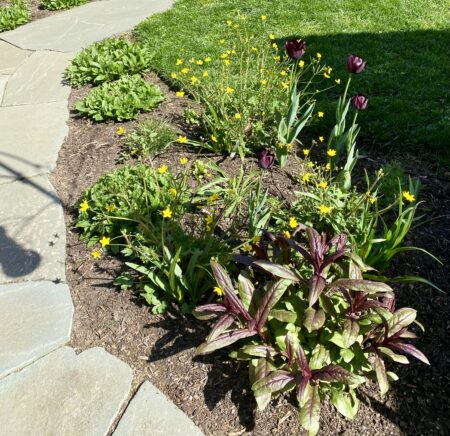
If you can’t find cute little plants of Western Buttercup at the nursery this spring, plan ahead and order seeds from a local supplier such as Willamette Wildlings, Northwest Meadowscapes, or Klamath Siskiyou Native Seeds.
Sowing them in place or in pots in the Fall is an easy way to add lots of blooms to your garden. The more the merrier with this happy little weaver. Tuck them in between perennials, bulbs, and at the feet of shrubs—anywhere the sun shines for a least half the day. Allow Western Buttercup to re-claim ground from weeds in bare nooks and pockets.
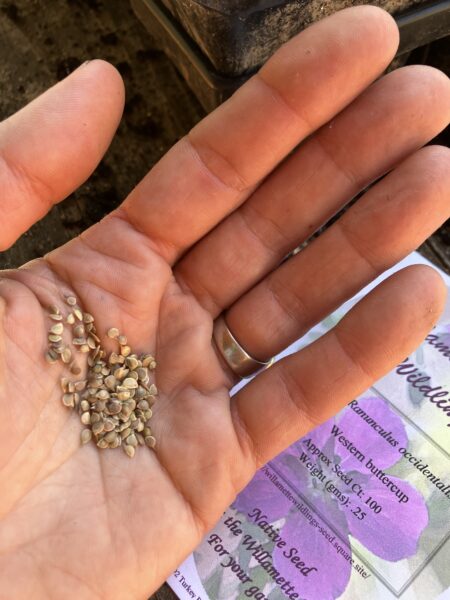
Speaking of weeds, you might have a misplaced hate for buttercups if you’re like my dear friend Ray. They fought the invasive weed, creeping buttercup (Ranunculus repens) for years in their garden. This is not that plant!
Though our native species sometimes grows low like its weedy relative in leaner conditions, it more typically forms a tidy clump with sprightly upright stems about a foot and a half to two feet tall. Learn to tell the difference between the two so you can be relentless in pulling the weed while preserving the native.
Plants are complex, inviting a closer look to check your emotional reactions. On the one hand, there’s the highly-bred, big bloomer that makes you swoon, but offers little to wildlife, and on the other there’s the weed that you despise so thoroughly that it masks your ability to see beauty in a related species.
Look closer. Ask questions. Choose both/and this spring when you visit the nursery.
Welcome fairy-winged joy by setting a feast of Western Buttercup in your little pocket of aesthetic wonder.
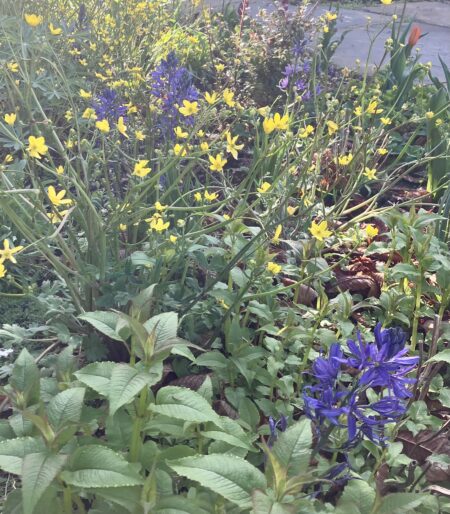

I loved your story, BraveButtercup!!! What beautiful writing! 17! Wow 🙂
Thanks, Krisitn! I appreciate you reading it. Isn’t it wild how childhood, and all its magical stories, are so fleeting? It was fun for me to dip back into that place with this story.